Figuring out what to wear hiking for your next trail outing? This definitive guide outlines what to wear, what to skip, and which products are the best.
What to Wear Hiking (Guide for Men and Women)
Choosing hiking clothing isn’t necessarily an easy task. There are thousands of products out there, and many different opinions on what makes the best hiking outfit. If you’re just getting started hiking, it can be intimidating knowing what to wear.
I’ve put in thousands of miles on trails all over the world, and I’ve learned that your choice of hiking gear and clothing can have a huge impact on whether your hike is an enjoyable adventure, or an uncomfortable, or even dangerous, ordeal. I’ve tested hiking attire and gear from several of the best outdoors brands and learned what works and what doesn’t.
There are several key pieces of outdoor apparel you should wear for hiking, from hiking shoes to base layers to insulating layers. Each piece of hiking apparel serves a specific purpose and needs to be lightweight, quick-drying, and comfortable.
I’ll walk you through all the key hiking essentials you’ll need to bring, help you understand the purpose of each, and recommend some awesome products I’ve found after years of testing different clothing on my own adventures.
Tips For What to Wear Hiking
Dress in Layers
The most common advice you’ll get when picking outdoor clothing is to wear layers. This means you’ll bring multiple pieces of clothing designed to wear over each other, and each one will have a very specific function. Here are the basic
- Base Layer: This goes right next to your skin and includes your shirt, underwear, and socks. The most important function of the base layer is to wick sweat away from your body so you stay (relatively) dry and comfortable.
- Insulating Layer (or Mid Layer): This can be anything from a lightweight fleece jacket to a thick down parka. The purpose is to provide insulation to keep your body heat in and cold air out. For winter hiking, some people will wear two layers: a thinner one with a much warmer one over it.
- Shell Layer: A shell can be a rain jacket or windbreaker and possibly rain pants. The shell is your armor against the elements: it should block wind and precipitation.
The great thing about dressing in layers is that you can add or remove any layer at any time as your body heat or the weather changes. Starting to sweat on a big hill? Start pulling off layers. Thunderstorm rolling in? Throw on your shell.
Choose the Right Fabric
Materials play a huge role in how well hiking clothes perform. Here are some of the most common materials you’ll see and what to expect from each of them.
- Polyester/Nylon: Synthetic materials made from polyester or nylon have become the go-to for sports and outdoor clothing. Synthetic fabrics are durable, versatile, quick-drying, and have great wicking properties.
- Wool: Wool is an incredible natural material that seems like it was purpose-made for the outdoors (makes sense considering sheep have to survive harsh conditions outside). Modern wool clothing uses the soft, high-performing wool of merino sheep. Merino wool is wicking, great at managing body heat, and even naturally anti-microbial, so it stays fresh longer.
- Cotton: Conventional wisdom is to avoid cotton at all costs for outdoor clothing. The main downside is that it will absorb tons of water and take hours to dry. This can be life-threatening in the outdoors. It’s always a good idea to stick to better moisture-wicking materials.
- TENCEL: This is a relative newcomer to the textile world. TENCEL is a brand name for lyocell: a semi-synthetic fiber that is made from the wood of beech trees. It is sustainably-produced and fully biodegradable. It has similar wicking performance to synthetic fibers in a more eco-friendly package. I’ve also found it does much better at resisting odor.
Dress for Seasonal Conditions
This may sound obvious, but you need to take the climate and weather into account when you pick what to wear hiking. For summer hiking you may be in shorts, sandals, and a tank top, while cold-weather hiking requires more layers.
The most important thing in summer will be protecting yourself from the sun. I personally am a big fan of long-sleeve shirts and broad-brim hats on summer hikes. Find what works for you and make sure to use sunscreen anywhere that isn’t covered. Lighter colors also work much better at reflecting the heat.
In cold temperatures, layering becomes more important. You’ll still want a thin, wicking base layer next to your skin to keep you dry and comfortable. Over that you may wear an insulating jacket and waterproof shell.
Bring Extra Layers
It’s always a good idea to pack an extra layer or two for your hike. Even if the forecast looks warm and sunny, you should always be prepared for unexpected changes in the weather. I try to always carry at least a lightweight windproof jacket. Modern jackets are incredibly lightweight so you don’t need to worry about extra weight in your pack.
Hiking Shirt
A quick-dry, wicking hiking shirt is, without a doubt, one of the most important pieces of hiking clothing you need. And the season and weather conditions are going to play a big part in the type of shirt you need.
Keep in mind, since this is a base layer, it sits right next to your skin, which means you should avoid cotton clothing. Cotton absorbs and holds onto moisture to an unbearable degree (up to 27 times its weight!). Instead, stick to wool or synthetic blends for hiking shirts, as they will do better at wicking sweat away from your skin and drying quickly.
Sun protection is also an important factor in choosing the best hiking clothing. I’m a big fan of wearing a long-sleeve shirt for the best sun protection.
-
Icebreaker Tech Lite: Merino Hiking Shirt

Polyester blends are often the best material to choose from when choosing base layers, but merino wool is the ultimate—it’s breathable, it will dry quickly and it helps to regulate your body temperature. Plus, merino is naturally anti-microbial, so it won’t get funky after a day on the trail.
The Icebreaker Tech Lite is a high-performance 100% merino wool t-shirt that is ultra-breathable, soft on your skin, and odor-resistant so you won’t smell too funky after a day on the trail.
-
Patagonia Capilene Cool Trail Shirt: Best Hiking T-Shirt

Patagonia is one of the most well-known clothing brands in the outdoor community. They make a great range of hiking shirts and other clothing for outdoor activities.
The Capilene Cool Trail Shirt is a simple high-performance tee that uses recycled materials and advanced textile engineering to give you a breathable, wicking, odor-resistant shirt that is comfortable in all conditions.
Do I like wool more? Yes, but this is a close second, and it’s more durable and costs much less.
-
REI Co-op Sahara Shade Hoodie: Hiking Sun Hoodie

Hoodies are typically something you think of as cool-weather clothing, but I love having a hood in all conditions. Modern lightweight sun long-sleeve shirt hoodies like the REI Co-op Sahara Shade Hoodie give you the ultimate protection from the sun with a hood that can cover your neck and ears and thumb loops so you can cover your hands.
It’s made with super breathable polyester fabric to keep you comfortable in even the warmest weather.
I’ve found that I vastly prefer a sun hoodie to constantly reapplying sunscreen to my arms, neck, and ears. If you’re hiking in the heat, this is a great way to go.
Just fair warning, you may get some odd looks walking around in a hoodie in summer. It’s worth it though.
Hiking Bottoms
To cover up your legs (or some portion of them) you can pick between hiking pants, shorts, or leggings. Again, the same principles apply here: whatever bottoms you choose, get lightweight, quick-dry materials.
Hiking can require a lot of stepping up over boulders and fallen trees, so good hiking pants need to be flexible enough to move with you. Stiff, tight denim jeans are out, and stretchy, lightweight synthetic pants are in.
-
Topo Designs River Shorts: Women’s Hiking Shorts

These 4.5-inch shorts are super lightweight, flexible, and breathable. They have a simple design that includes a webbing cinch belt, two front pockets, and a zippered back pocket that’s perfect for keys. These shorts are super versatile and work for anything from all-day hikes to paddleboarding to morning bike rides.
The best part of the River Shorts are their quick-dry ability. Whether you’re drenched in sweat from a strenuous hike or took a dip in a stream, these versatile shorts will be dry in no time.
-
Outdoor Research Ferrosi Leggings: Women’s Hiking Leggings

Leggings or yoga pants are an awesome alternative to baggier hiking pants for women (and men too, if you’re confident enough). They are flexible and comfortable, and they don’t have any loose material to snag on rocks or branches.
The Outdoor Research Ferrosi Leggings are super comfortable and are designed specifically for more rugged outdoor activities. Instead of the flimsy polyester/spandex you usually see in leggings, these are made with a tougher ripstop nylon blend. It’s much more abrasion resistant but still has plenty of stretch. They’re so good, they made our list of the best gifts for hikers.
Plus, the knees and bottom of these leggings are reinforced with a tougher Cordura material, so you don’t have to worry about them while scrambling over boulders in the trail.
-
PrAna Stretch Zion Short II: Men’s Hiking Shorts

The Stretch Zion Shorts from PrAna are awesome hiking shorts for men. They are made of durable, recycled materials with four-way stretch that offers a lot of comfort and flexibility on the trail.
The built-in cinch strap for the waist means you don’t have to wear a belt and have it bunch up awkwardly under a backpack hip belt.
-
KÜHL Free Radikl: Men’s Hiking Pants

Hiking pants need to be lightweight, breathable, durable, and most of all comfortable. KÜHL is a Utah-based company that builds some of the best hiking pants out there with utilitarian designs and bomber materials.
The KÜHL Free Radikl hiking pants are simple, straightforward, functional, and highly durable. There really isn’t anything super special here other than a pair of bomb-proof, comfortable hiking pants that work great for hiking.
Insulating Layer
If the temperatures drop, you’ll want some sort of insulating layer (also known as a midlayer) to keep your body heat in and seal out cold air. In higher elevations, I always bring some sort of insulating jacket, even in the middle of summer. Mountain weather is unpredictable and can drop quickly, and the best jackets keep you prepared without weighing you down.
Down vs Synthetic Insulation
One of the biggest debates in the outdoor world is whether down or synthetic insulation is better for hiking layers.
Down still reigns supreme when it comes to pure warmth vs weight. Humans have made some pretty impressive technology, but we still can’t compete with nature in some things. If you want the warmest, lightest jacket, down is the winner, hands down (see what I did there?).
Where synthetic insulation has the advantage is in wet conditions (or when you start to sweat under your layers). Down insulation quickly loses its warmth when wet, but synthetic insulation typically performs much better.
-
Patagonia Nano Puff: Synthetic Insulated Jacket

If you’re looking for the simple reliability and water-resistance of a synthetic insulated jacket, the Patagonia Nano Puff is one of the most popular jackets to wear when hiking. It’s warm, lightweight, and packs into it’s own pocket when you aren’t using it.
The PrimaLoft Gold insulation used in the Nano Puff is one of the best synthetic insulations on the market. It has great warmth-to-weight ratio and is very compressible (though not quite as good as down).
This jacket is made from 100% recycled materials, so you can feel good about buying it.
-
Arc’teryx Cerium Hoody: Down Insulated Jacket

A down jacket is one of the most iconic clothing layer for cooler hikes. Down is warm, lightweight, and packable, and a good down jacket will serve for years.
The Arc’teryx Cerium Hoody is an awesomely warm down jacket that won’t weigh you down (hah, down jokes!). I’ve found that the hooded design adds a lot of warmth for just a small weight penalty.
-

Fleece jackets are popular for their comfort, warmth-to-bulk ratio, and quick-drying properties. While I wouldn’t choose a fleece as my only layer for winter weather, it’s a great choice for spring and fall conditions.
The Cotopaxi Abrazo is a soft fleece jacket that’s made with 100% recycled polyester and is great for keeping you warm in variable conditions. It’s lightweight and comfortable, and the hood makes it easy to keep your neck and head warm. Plus, the color combos are just awesome.
Shell Layer
Come wind, come rain, you want something to protect you from the elements. A shell is the outermost part of any layering system. The purpose of this outer layer is to be your outer armor shielding you from the elements. A good shell blocks cold wind and precipitation, keeping you dry and warm inside.
I highly recommend a versatile waterproof shell to wear hiking because it will keep you protected in all conditions.
As an alternative for dry-weather hikes, you can use a lightweight windbreaker. This is great for going fast and light, but I wouldn’t consider it a full replacement for a waterproof shell.
Mountain weather can be unpredictable, so in higher elevations, I recommend always having a waterproof layer with you in case conditions go south.
-
Arc’teryx Beta Jacket: Rain Jacket

The standard shell layer for hiking is a waterproof/breathable rain jacket. A good rain jacket combines lightweight water-repellant fabric outer layer with a fully waterproof membrane (like GORE-TEX) that keeps moisture out but lets water vapor and heat to escape from your body.
Arc’teryx builds some of the best waterproof shells on the market, and their Beta Jacket is an icon. It is lightweight, durable, amazingly waterproof, and surprisingly breathable. The three-layer construction gives this rain jacket excellent performance.
The downer? It’s a bit expensive, and you’ll definitely have to look at it as an investment.
-
Patagonia Houdini Air Jacket: Windbreaker

If you know there won’t be any rain, and the weather’s a bit warmer, a lightweight windbreaker can be a great shell layer option, especially if you’re moving fast and want to cut down on weight.
The Patagonia Houdini Air Jacket offers protection from wind and light rain with a tight-weave nylon shell and a water-repellant coating.
I would carry this on spring or fall hikes in the desert, when I know it won’t rain but want some protection from wind. In mountain areas, though, I think it’s always a good idea to be prepared for precipitation.
The best part is that it weighs a scant 4 oz and packs down super small, so it’s super easy to bring this windbreaker with you on any hike.
-
Montbell Versalite Jacket: Ultralight Rain Jacket

I’m a big fan of packing an ultralight waterproof jacket even when the forecast is dry. The Montbell Versalite is a fully waterproof jacket using GORE-TEX INFINIUM. Somehow, it weighs in at just 6 oz. This is one of the lightest fully waterproof rain jackets on the market.
When considering what to wear hiking, weight is a major factor. This featherweight rain jacket keeps you prepared without weighing you down.
This windproof rain jacket not only works for blocking out precipitation, but it will also protect you from biting wind. If you want a bit more protection than a windbreaker but don’t want the bulk and weight of most waterproof shells, a lightweight rain jacket like this can be a great choice for your next hiking trip.
-
Mountain Hardwear Stretch Ozonic Pants: Rain Pants

I typically don’t wear rain pants while hiking (they end up making me too hot and clammy), but in cold, constantly wet conditions, like December in the PNW, good waterproof pants can do a lot for keeping you comfortable.
The Mountain Hardwear Stretch Ozonic Pants are absolutely my favorite rain pants because they don’t have that baggy, crinkly feeling you usually get with waterproof clothing. They’re made with a soft four-way stretch material that feels comfortable and flexible while still keeping you dry during all-day deluges.
Hiking Underwear
Any hiking underwear should have moisture-wicking properties. Underwear is one of the areas where I’d steer clear of cotton at all costs! Synthetic or natural fiber underwear will help to prevent chafing and keep your nether regions cool.
The best hiking underwear needs to be breathable and slip-resistant. Nothing’s worse than your underwear riding up or getting chaffing while on a hike.
-
Smartwool: Merino Underwear

Once again, merino wool is king. The natural breathability, wicking, and anti-microbial properties make this fiber a god-send for hikers. Smartwool makes some of the best merino wool underwear for men and women. They blend high-quality merino with synthetic fibers to improve durability, support, and moisture wicking.
-
Icebreaker Sprite Bra: Sports Bra for Hiking

If you already have a good sports bra that you like, it should work just fine for hiking, but you’ll want to avoid anything with bulky straps or buckles that could rub or cause pressure points under a backpack.
The Icebreaker Sprite Bra is a popular choice. The Merino fabric is super breathable and comfortable, and the racerback design means you don’t have to worry about straps sliding around under your backpack.
Hiking Footwear
The hiking boots or shoes you choose for a hike are extremely important. They are the difference between feeling fine at the end of the hike or having excruciating blisters and sore feet.
Good hiking shoes = a good hike!
A good pair of hiking shoes should have good ankle support, as well as cushioned soles. They should also have gripping rubber outsoles so that you won’t slip when walking on roots, gravel, grass or rocks.
Waterproof material is also an important consideration. Having wet feet on the trail is the worst and will lead to chafing, blisters and overall misery. That said, for most hiking I’ve found that quick-dry breathable shoes are better than fully waterproof. If you step knee-deep in a stream, you’re feet are going to get wet no matter what you do, and waterproof shoes will just keep your feet soaking wet all day.
Personally, I prefer to be quick on my feet, and I opt to hike in trail running shoes instead of hiking boots or shoes. Trail runners are lighter and easier to pack, too, so they take up less space in your bag if you’re traveling somewhere.
-
Altra Lone Peak 7: Trail Running Shoes for Hiking

If you’re ready to join the revolution of hiking in lightweight trail runners, the Altra Lone Peak 7 is one of the best choices out there. For years it’s been the most popular shoe on long thru-hikes like the Apalachian Trail and Pacific Crest Trail, and for good reason.
The Lone Peak has a roomy toe box, giving your feet space to spread and swell as you hike. The balanced cushioning protects the bottoms of your feet without feeling overly bulky. These trail runner hiking shoes are awesomely comfortable on longer hikes.
Altra has struggled with durability in the past, but I’ve found this newest version of the Lone Peak holds up pretty well over hundreds of miles of hiking.
-
Keen Targhee 3: Hiking Boots

If you prefer something a bit more supportive, you may want to wear hiking boots. Unlike the chunky, uncomfortable boots of the past, modern hiking boots are light, grippy, and comfortable while still providing the beefed-up protection of a boot design.
Keen makes some of the best hiking boots in the business, and their Targhee 3 hiking boot is an icon in the outdoor world. This trail-tamer features burly leather construction, a grippy outsole, a waterproof/breathable membrane, and loads of support and protection.
The best features of Keen hiking boots are the wide, comfortable toe box and the sturdy rubber toe protection. You can kick rocks down the trail all day and not bust your toes. The biggest advantage of hiking boots over hiking shoes is the protection, and these really deliver on that front.
-
Chaco Z/Cloud: Hiking Sandals

Yes, you can hike in sandals.
No, that doesn’t automatically make you a hippie.
Yes, it’s awesome.
For those who like to hike with free toes, Chaco’s are the official sandal of all trail bums. The Chaco Z/Cloud sandal feels like wearing a burly hiking boot under your foot and nothing on top. They’re super grippy and super durable.
Please, just make sure to watch out for rocks and sticks on the trail. Your toes will thank you! If you’re going into rougher terrain, you may want to stick with closed-toe hiking shoes.
Hiking Socks
For most hiking clothing, you’ll probably be just fine wearing clothes you already own. Socks are the one exception. Without good socks, a pleasant hike can quickly turn into a torture event. Seriously, it’s that important.
Having dealt with hundreds of blisters over the years, I can tell you they’re something you want to avoid. Good socks are your first line of defense.
What should you look for in hiking socks?
First of all, the material. I said it before and I’ll say it again—wool is where it’s at. Cotton socks are a big no-no, synthetic socks are okay, but merino wool socks are the best. Period.
Second of all, good hiking socks should cushion your feet. The seams should always be flat so they don’t rub against your foot and the fit should be snug but not tight.
By this point, the outdoor community is in (almost) universal agreement that the best socks in the world are made in Vermont by Darn Tough. They’re expensive, but they are also awesomely comfortable and durable. Plus, they have an incredible warranty. If you ever wear a hole in a Darn Tough sock, send your old pair back and they’ll send you a new one for free. Just don’t lose them!
Hiking Accessories
Beyond the basic clothing essentials, there are several other pieces of hiking gear that are essential. Here are some of the most important accessories you’ll want to bring.
-
Outdoor Research Sunbriolet: Sun Hat

I love broad brim hats. Sure, they look a little dorky, but when you’re on a hike, that matters a hell of a lot less than that sunburn that’ll turn into skin cancer in twenty years.
If anyone asks me what to wear hiking, one of my first answers is a good hat (socks might be the only hiking clothing that’s more important). A hat will protect you from sunburn, heatstroke, and help you stay hydrated.
The Outdoor Research Sunbriolet is an awesome wide-brimmed hat that’s lightweight and offer great sweat management and sun coverage. And hey, it doesn’t look half bad either.
-
Goodr: Sunglasses

Again, sun protection is key when you’re outside all day, and sunglasses are a must. I’ve forgotten sunglasses and burned my eyes many times, and trust me, that’s not something you want to experience.
Pretty much any old sunglasses will do. Nowadays, even dollar store glasses have ultraviolet protection, which is the most important thing you need.
If you want to invest a bit more you can get features like polarized lenses and contrast-enhancing optics. I personally wouldn’t ever spend a lot of money on sunglasses for hiking, because they’re very likely to get scratched, cracked, or lost.
Goodr makes a range of great polarized sunglasses that are quite affordable. They are designed specifically for running and hiking, so they won’t fall of your face. Plus, they are stylish and don’t make you look like an alien bug.
-
Mammut Stretch Glove: Gloves

If you’re hiking at higher elevations or in cold weather conditions, it’s a great idea to bring a pair of lightweight gloves to keep your fingers warm through those chilly mornings.
The Mammut Stretch Glove is a simple thin glove that’s perfect for spring and fall hikes. It definitely won’t keep you warm in true winter, but it’s just enough for those September mornings in the mountains.
-
Osprey Talon 22 or Osprey Tempest 20: Hiking Daypack

On really short hikes, you can probably get by just carrying a water bottle in your hand. Most of the time, though, you’re going to want a daypack to carry water, food, and gear.
While you can use just any old backpack, if you’re going to be on the hiking trails a lot, it may be worth investing in a purpose-built backpack to wear hiking. And please, PLEASE, don’t wear one of those stupid drawstring bags.
The Osprey Talon for men and Tempest for women are some of the best all-around hiking backpacks out there. They have comfortable shoulder straps, supportive frame sheets and hip belts, and a breathable design to keep your back ventilated.
Final Thoughts on What to Wear Hiking
The right hiking clothes can mean the difference between an uncomfortable ordeal and a thrilling, rewarding hike. Good hiking clothing should help you stay warm when it’s cold, cool when it’s hot, and dry all the time.
While I’ve recommended a range of awesome products, ultimately the choice of what to wear hiking is highly personal. I highly recommend trying different things out to see what works for you, and don’t be afraid to switch things up or go against the most popular opinions.
So what are you wearing for your next day hike? Let us know in the comments!
What to Wear Hiking FAQs
-
What kind of clothing is best for hiking?
The best clothing for hiking is lightweight, breathable synthetic or merino wool clothing.
-
What is the dress code for hiking?
There is no dress code for hiking, but you’ll want comfortable moisture-wicking clothes made from synthetic or merino wool fibers.
-
Is it better to wear shorts or pants when hiking?
The choice between shorts and pant for hiking depends on the weather, terrain, and your personal preferences.
-
What is the #1 etiquette rule while hiking?
The most important etiquette rule for hiking is to treat the environment around you (and other hikers) with respect.
-
Should you wear pants or jeans hiking?
Jeans are not a good choice for hiking. Look for lighter, more flexible pants made from nylon or polyester.
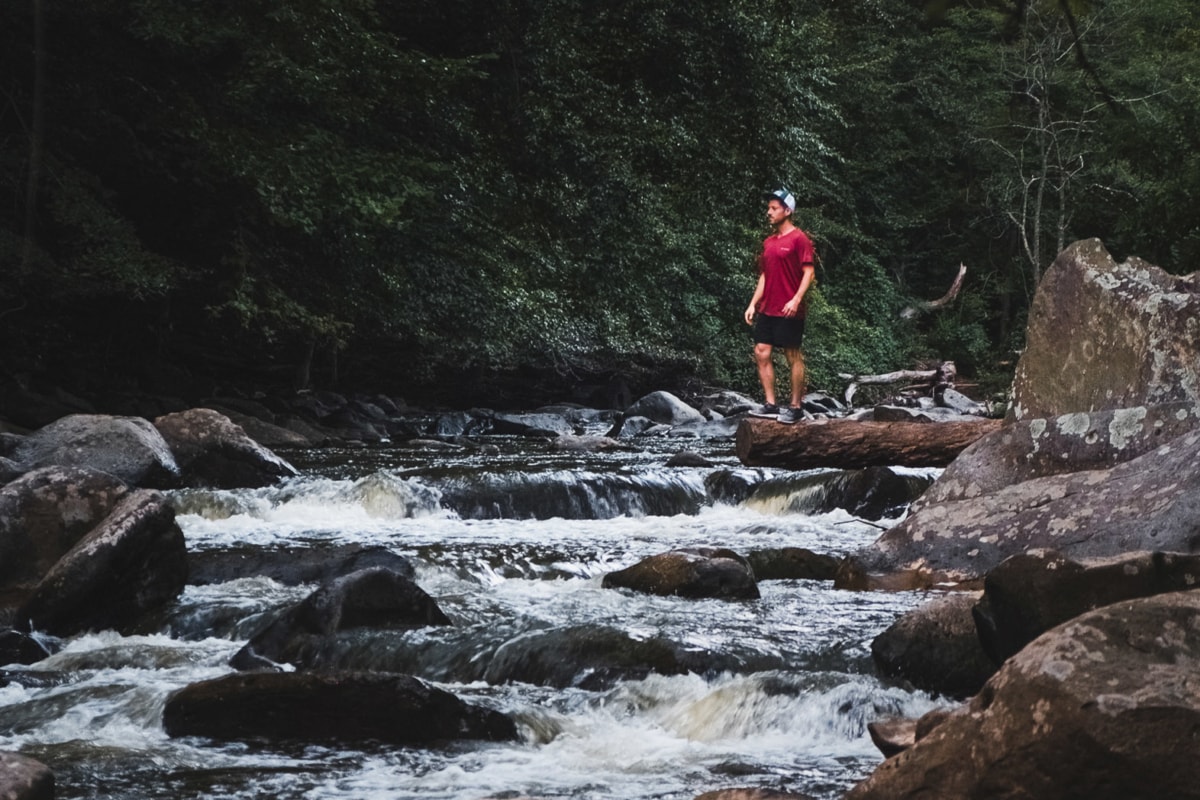

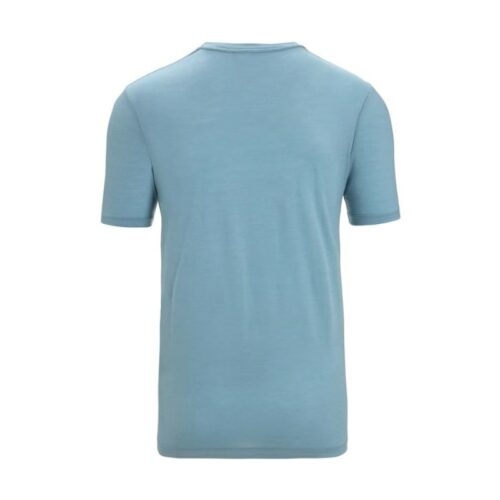
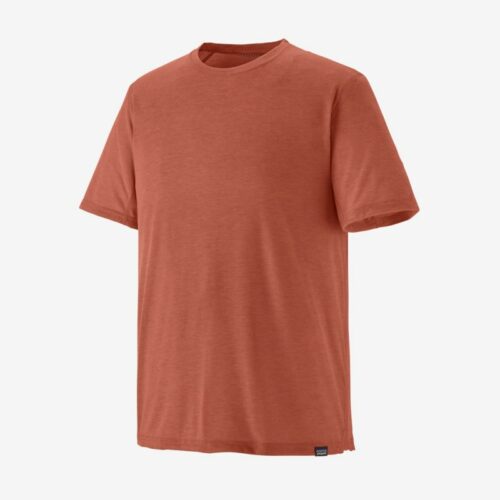
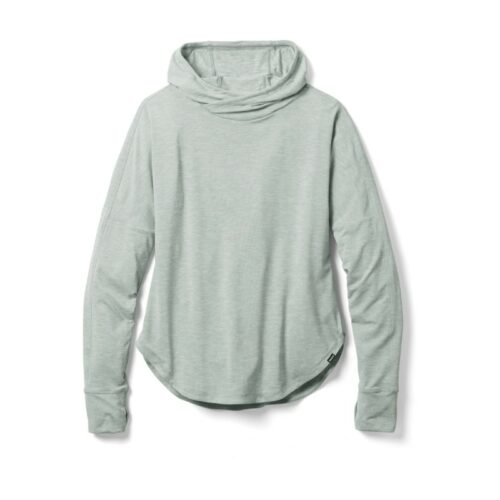
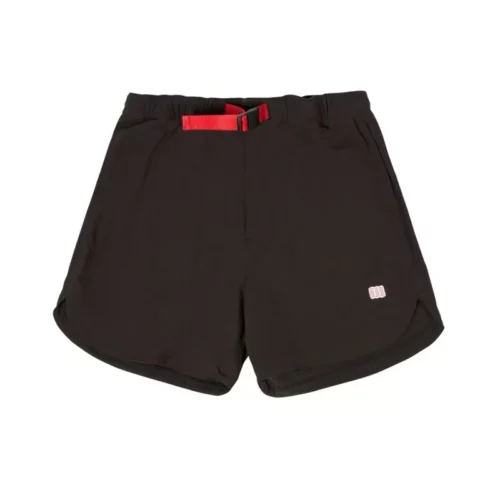

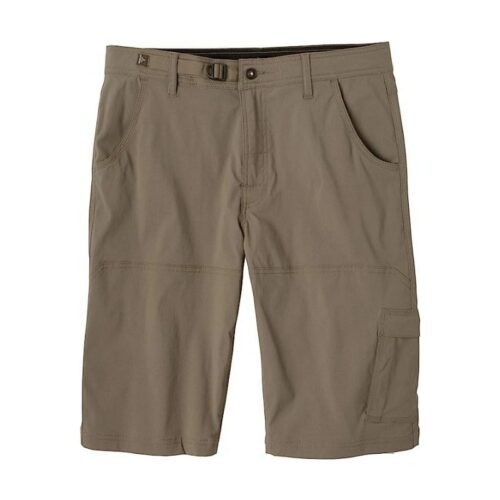
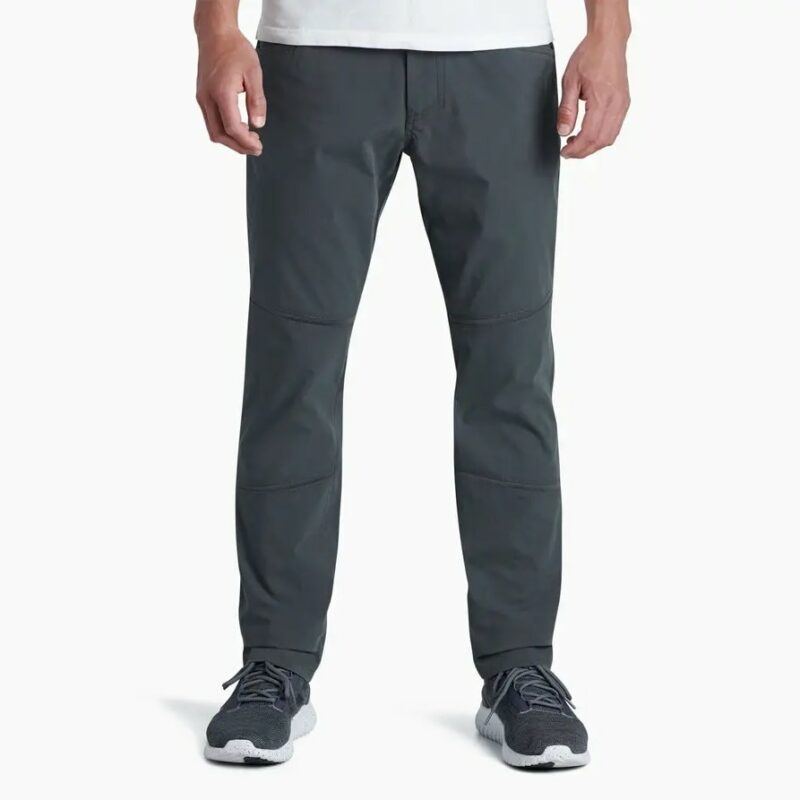
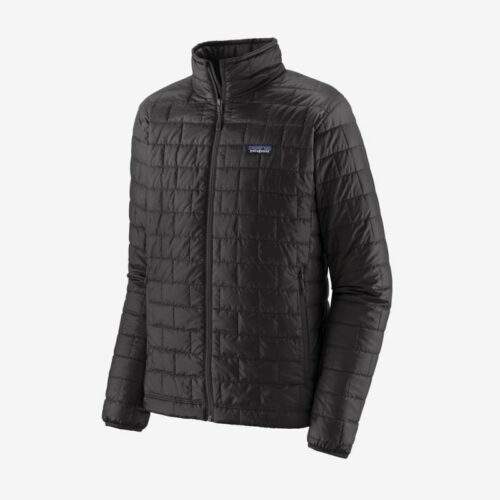
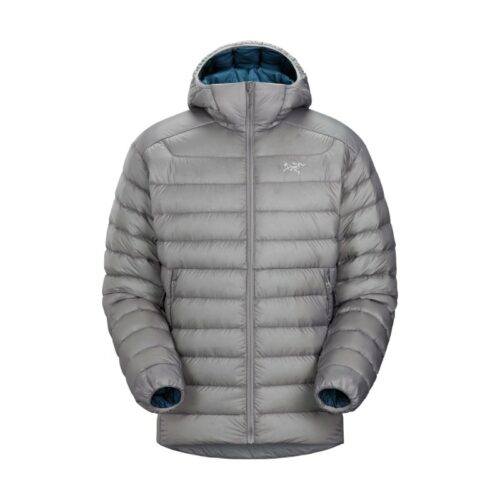
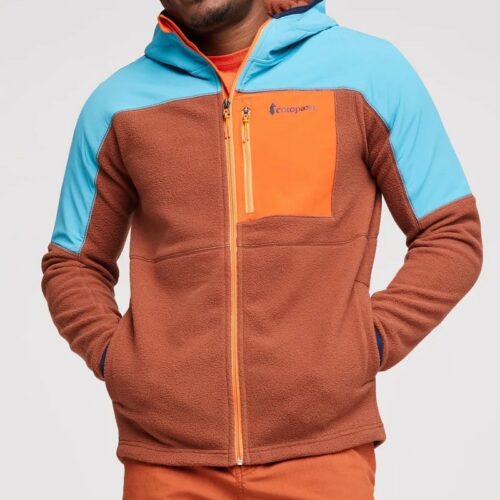
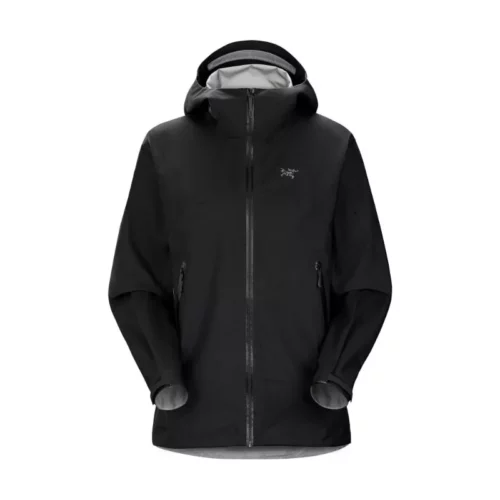
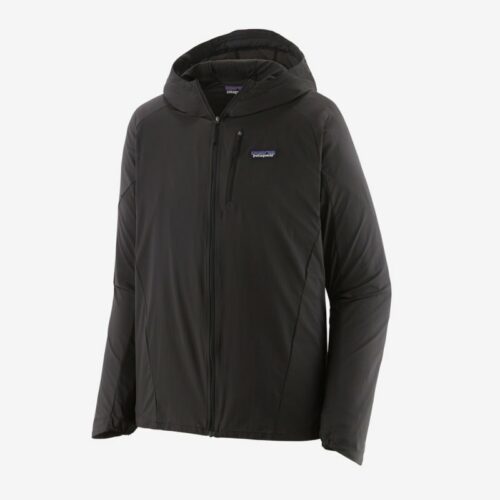
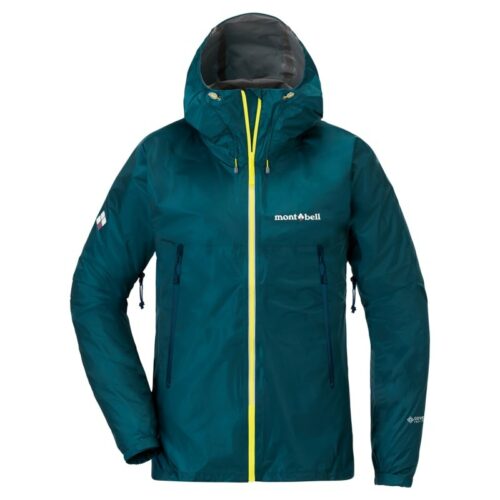
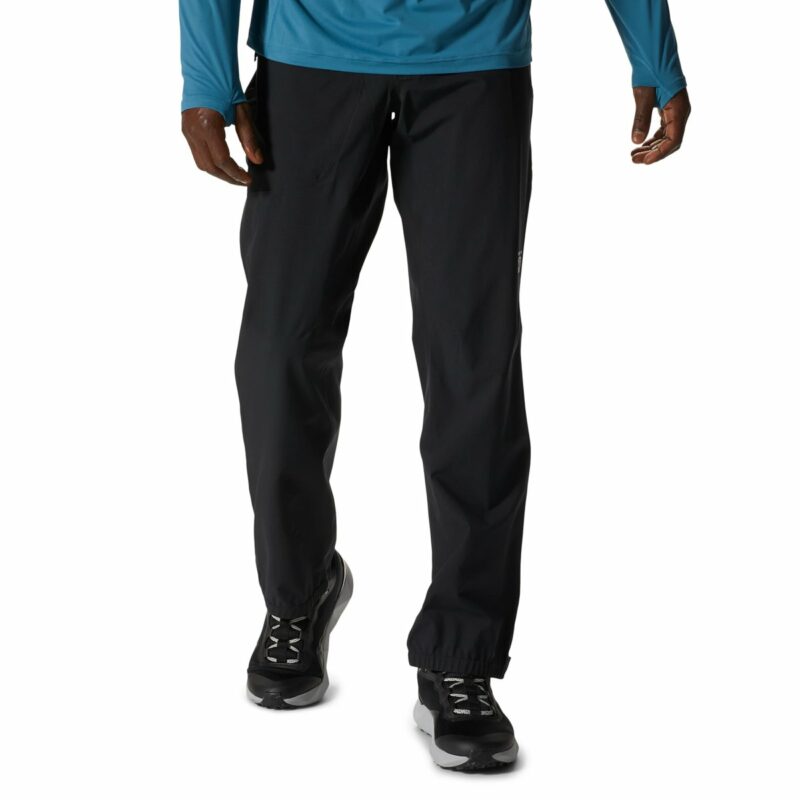
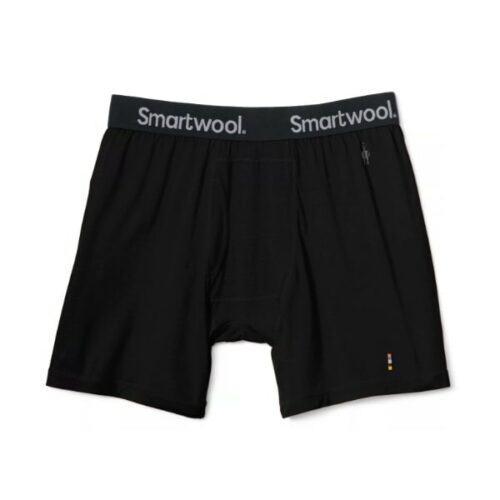
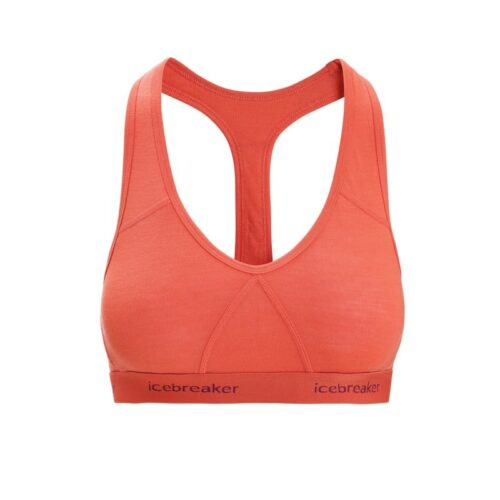
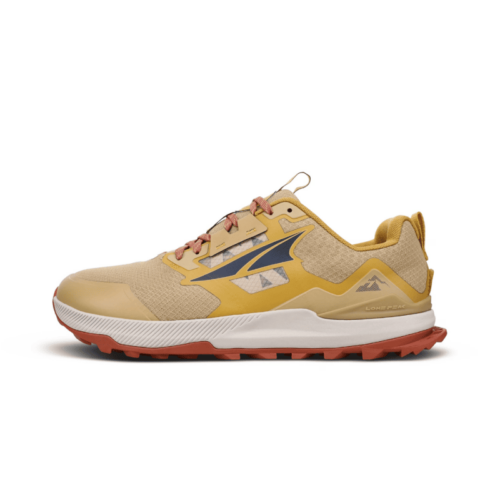
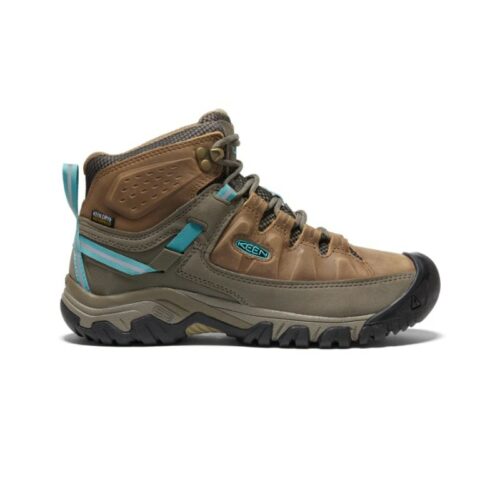
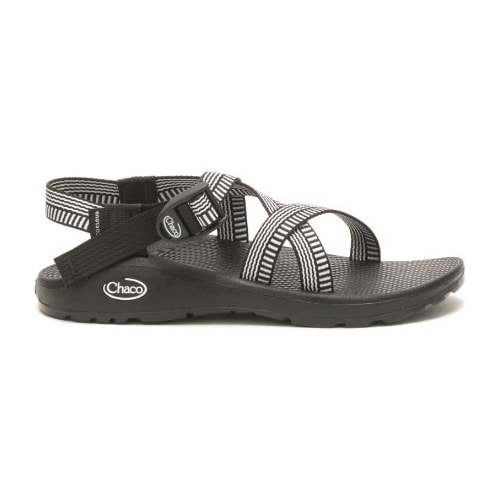
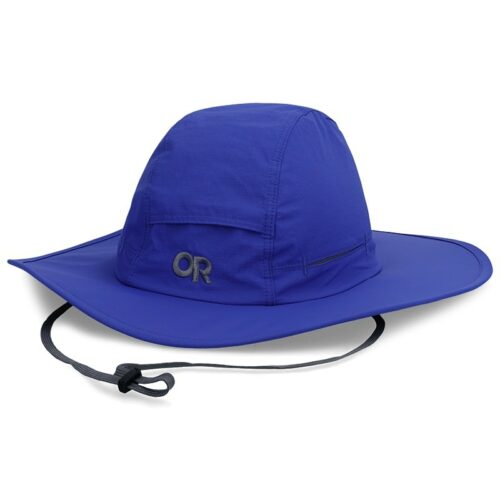
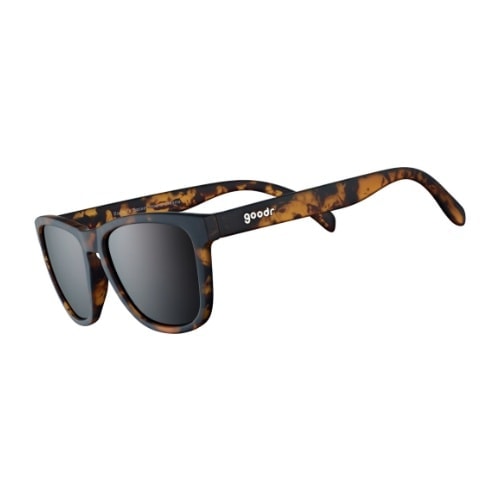
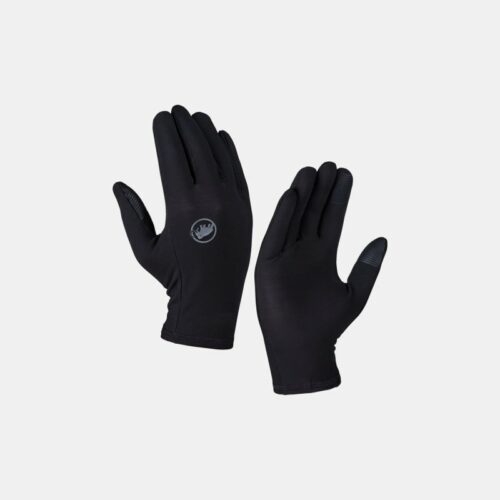
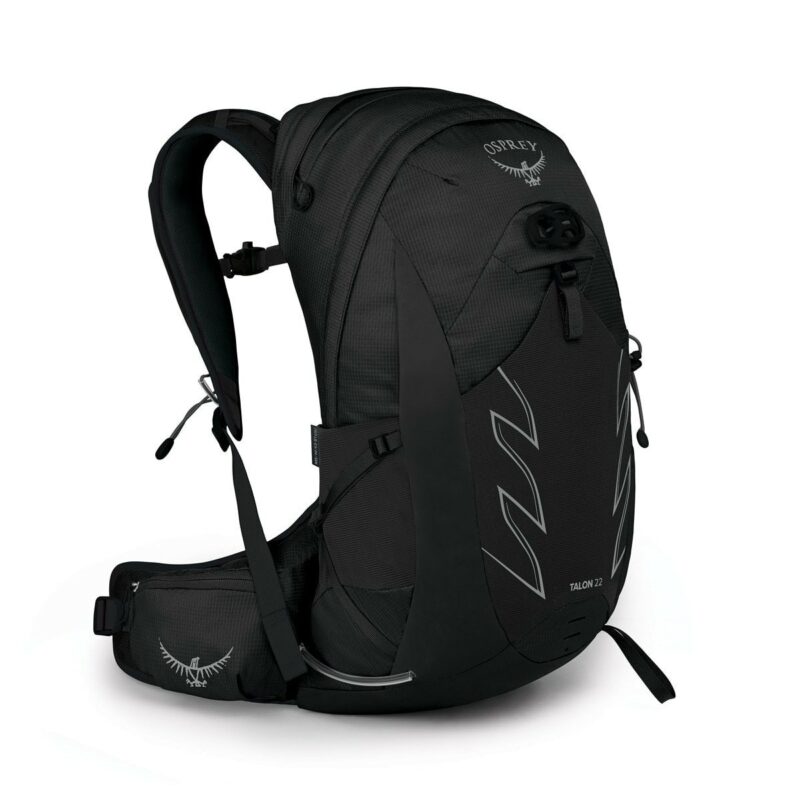
Nice breakdown Jeremy. Nothing worse than being sopping wet during a hike. We want layers and the right clothing to wick sweat off of us in colder climates.
Thanks man! Too true. The wrong gear can turn a hike into a nightmare!
Thanks man! Too true. The wrong gear can turn a hike into a nightmare! Thanks for the comment 🙂
Thanks for your well written article. I have been reading lot of articles on what to wear for hiking for Patagonia or Antarctica and you cleared my doubts.
Hi Naga! I’m so glad it was helpful! What did you decide on?
I love hiking and before I go I make sure that I’ve got only which that I really need.
I find it helpful when you said that I would only need a cotton-free wicking short sleeve t-shirt when hiking during the summer. My friends and I are thinking about going hiking soon, and I was wondering what to wear since I haven’t gone hiking before. I’ll follow your advice and buy some short-sleeve t-shirts that are made from polyester if we go on a hiking trip anytime soon. Thanks!
So glad you found it helpful!